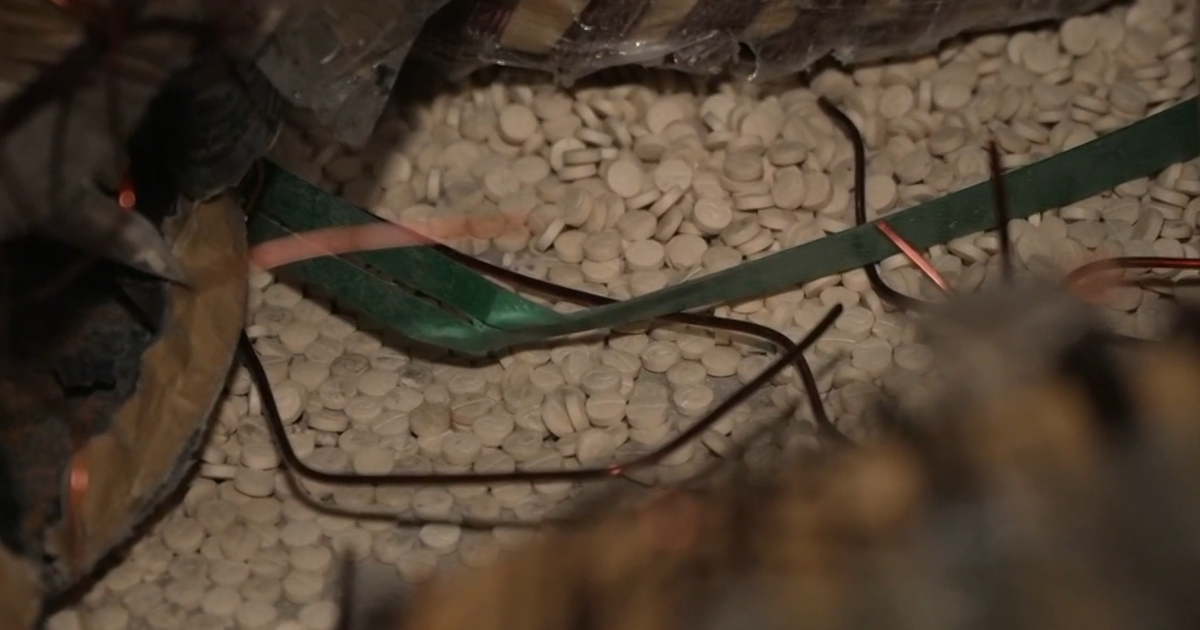New hurricane-hunting drones deployed to help warn of intensifying storms: "This could be transformational"
With Tropical Depression Fred lashing the Dominican Republic and Haiti with heavy rain and powerful winds, and poised to hit Florida this weekend, a revolutionary new tool could make it easier to predict the intensity of storms and where they are headed. In this morning's "Eye on Earth," we're looking at how emerging technology may help warn of the dangers from hurricanes.
They look like bright orange sailboats, but nobody will be taking one of these for a joyride. They are hurricane-hunting drones destined to face some of the fiercest storms on the planet, to acquire data about the formation of hurricanes.
"This could be transformational in how we understand how storms develop, and increase our chances of warning people on shore of what danger they might face," said Richard Jenkins, the founder and CEO of Saildrone, a California company that created these winged robots.
"CBS This Morning" was there as they towed two of them out into the ocean off the coast of Jacksonville, Florida.
"These things have no idea what they are about to get into!" said CBS News senior national and environmental correspondent Ben Tracy.
"Exactly!" Jenkins laughed.
If it works, these solar- and wind-powered autonomous drones will provide the first-ever data and video from the surface of the ocean inside a hurricane. That data is relayed in real time back to Saildrone's mission control at a former naval air station in Alameda, California, which houses its orange army – a fleet of more than 100 drones.
"We have nothing else that has done this, so it would be extremely new and extremely valuable," said Greg Foltz, a scientist with the National Oceanic and Atmospheric Administration.
Foltz said that, right now, most of the information we have about hurricanes comes from hurricane-hunting airplanes that fly into storms and drop probes from the sky.
- Meet the hurricane hunters ("CBS This Morning")
- NOAA's first all-female hurricane hunting crew ("CBS This Morning: Saturday")
Saildrones are expected to provide far more data right from the storm's so-called engine, where the sea and air meet. This could provide important new insight into how strong a storm is and where it's heading.
Tracy asked, "We've seen in recent years hurricanes that seem to suddenly go from a one to a four, a two to a five; is that some of what you're hoping to understand, how does that actually happen?"
"Yes, exactly," Foltz said. "That's called rapid intensification, and that can be especially dangerous near landfall."
Last year Hurricane Laura rapidly grew into a monster storm with 150 mph winds – the most powerful hurricane to ever hit Louisiana; and in 2017 Hurricane Harvey went from a category 1 to a category 4 in just 24 hours, before hitting Texas and causing catastrophic flooding.
Hurricanes are the costliest natural disasters in the U.S., totaling on average $54 billion in wind and flood damage each year, according to the Congressional Budget Office. Warmer ocean waters due to climate change are making hurricanes stronger, and a warmer atmosphere means they also hold more water.
"This gives us a whole new level of intelligence as to what's coming for us and hopefully exactly where they're gonna land," Jenkins said.
Saildrone is deploying five hurricane hunters – three from the Caribbean, and two from Florida. Each one is 1,500 pounds and designed to withstand hurricane-force winds and 10-foot waves. Once the next hurricane forms in the Atlantic, the Saildrones will converge on it, traveling up to 50 miles per day, ideally sailing right into the storm from all sides.
Tracy asked, "Do you find yourself in the weird position of kind of hoping for a hurricane to test this out?"
"We do," Jenkins replied. "It's kind of a weird situation where you obviously don't want hurricanes for the safety of people, but we really want to see them to test the technology. You know, it's a little bit like sending your kids off to college for the first time."
The company has already tested its Saildrones in the rough waters of the Southern Ocean near Antarctica, and a larger version has been deployed from San Francisco Bay to map the ocean floor on a trip to the Hawaiian Islands. But a hurricane is still a voyage into the unknown.
"To go through a hurricane really is kind of the last frontier," Jenkins said. "So yeah, we'll see how it goes."







